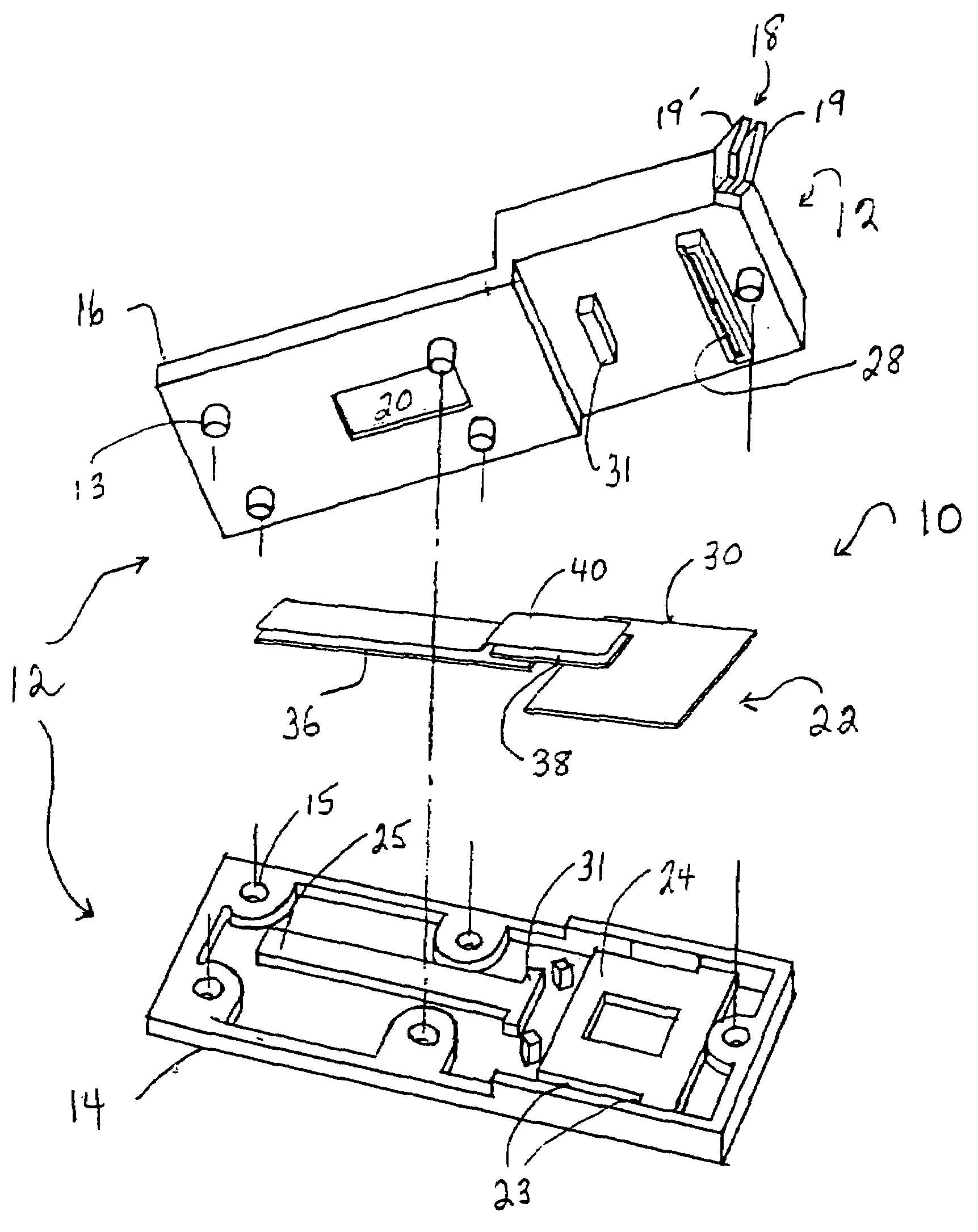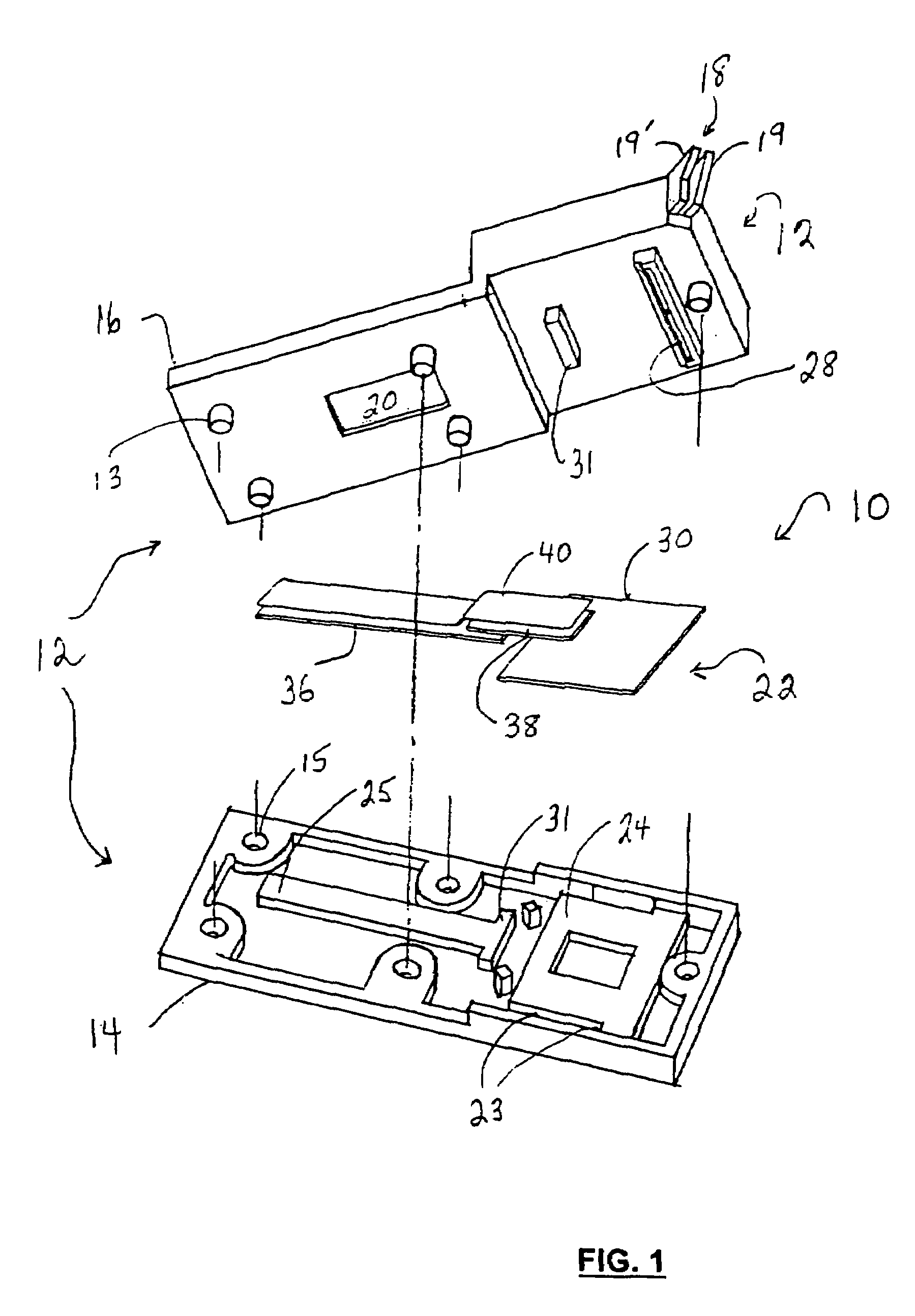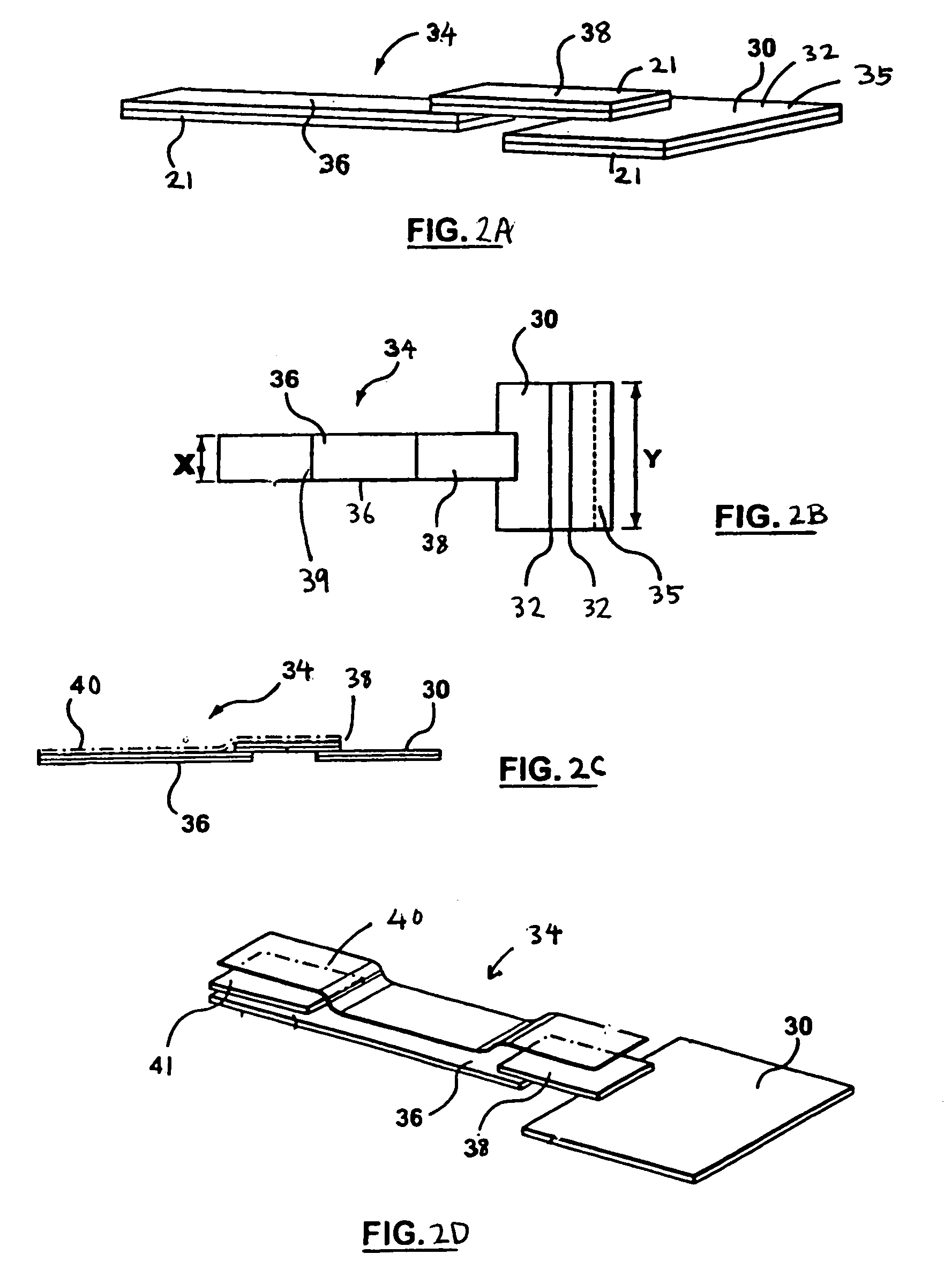Diagnostic device for analyte detection
- Summary
- Abstract
- Description
- Claims
- Application Information
AI Technical Summary
Benefits of technology
Problems solved by technology
Method used
Image
Examples
example 1
[0052]The converging pattern of sample flow toward the detection channel was first confirmed, in an experiment in which normal human serum was delivered as a linear band from the deposition channel and then permitted to flow for about ten minutes toward the detection channel. The bridge was then removed, thereby stopping sample flow within the sample pad, to reveal the label flow pattern. As illustrated in FIG. 7A, the labeled detector antibodies entrained within the migrating sample clearly displayed flow converging toward the bridging pad of the detection zone. This same converging sample flow is seen in assays that run to completion without bridging pad interruption. Notwithstanding the reduced width of the detection channel relative to the span of labeled detector antibody deposited on the sample pad, there was very little detectable stagnation of reagent or sample in the shoulders of the sample pad. Substantially all of the sample and reagent migrated toward the bridge leading ...
example 2
[0053]The carrier pad arrangement just described was also employed in the present device for the detection of rCKMB, as analyte. In this assay, 50 μl of normal human serum alone or spiked with rCKMB was tested. The results at 15 min are illustrated in FIGS. 7B (normal human serum), 7C (normal human serum spiked with 6.25 ng / ml rCKMB), and 7D (spiked with 32.35 ng / ml rCKMB). These Figures reveal that label deposited on the sample pad flowed almost completely out of the sample pad and into the detection zone, there being very marginal and negligible stagnation of labeled reagents in the sample pad shoulders. The results also reveal that rCKMB is detected in the spiked samples, the assay being more sensitive to detection of CKMB at the higher concentrations.
example 3
[0054]The device also was assessed for its ability to retard the flow of red blood cells, so that they do not migrate into and obscured results otherwise visible at the capture line. To this end, 50 μl of fresh heparinized human whole blood was tested. After 15 min, the majority of the red blood cells were retained in the sample pad, and the front of the red blood cells was restricted at the center of the bridging pad. After about 1 hour, the front of the red blood cells was stabilized at just beyond the bridge before reaching the capture line within the read-out window, and remained there afterwards. Hemolysis was not visually detectable. The result at 72 hours is shown in FIG. 7E. It will thus be appreciated that the bridging pad and its elevation relative to the sample and detection pads also contributes to the filtration of sample particulates including red blood cells, and that this carrier pad array is particularly well adapted for detection of soluble analytes present in bloo...
PUM
 Login to View More
Login to View More Abstract
Description
Claims
Application Information
 Login to View More
Login to View More - R&D
- Intellectual Property
- Life Sciences
- Materials
- Tech Scout
- Unparalleled Data Quality
- Higher Quality Content
- 60% Fewer Hallucinations
Browse by: Latest US Patents, China's latest patents, Technical Efficacy Thesaurus, Application Domain, Technology Topic, Popular Technical Reports.
© 2025 PatSnap. All rights reserved.Legal|Privacy policy|Modern Slavery Act Transparency Statement|Sitemap|About US| Contact US: help@patsnap.com



